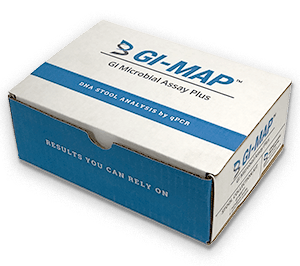The Five Functional Lab Tests You Need (And Your Doctor Likely Doesn’t Know About)
Understanding the Top Functional Lab Tests for Perimenopausal Women
When my hormones were falling apart after the birth of my third child, I was desperate for answers. I went from doctor to doctor, trying to figure out why I was having panic attacks, extreme insomnia, mood swings, weight gain, and brittle hair.
I was offered the Pill. And Prozac. I was pretty sure neither one of those medications would fix what was actually wrong with me, so I prayed. And after a few months, the Lord led me to Functional Diagnostic Nutrition. This program’s hallmark is next-level functional lab testing that gives real answers. And real answers I received! I worked on my gut, hormones, minerals, food sensitivities, and brain. And I began to heal. I felt centered and whole again. The right data changed everything for me, and I love sharing that same gift with my perimenopausal clients.
Perimenopause can be a complex time for women, with hormone fluctuations often leading to a confusing cluster of symptoms that can be tough to manage (for both you and your family). Luckily for us, functional lab tests can offer amazing clues that help us create personalized wellness protocols. Functional Diagnostic Nutrition Practitioners (like me, hi!) are extensively trained in understanding and teaching clients about these lab test results. My favorite clinic days are lab test result days, and I love to create personalized protocols for clients based off of the data that their labs provide. I’ve never seen a suite of lab tests look exactly the same, and that’s the beauty of this process.
Functional lab testing also runs real deep. The standard lab tests your doctor runs generally consists of cholesterol levels (rather meaningless as cholesterol is needed to build sex hormones), a CMP (checking fluid and electrolyte levels- also relatively unimportant as the body keeps tight homeostatic controls on electrolytes…if they are off, you’re likely pretty sick and you know it), TSH (a pituitary hormone and not important when it comes to how well your thyroid is actually functioning), and Vitamin D (that one’s important!). Blood work can also be confusing. The test is a one-time peek into a single moment in time- not a full picture of what is going on over the course of a day, month, or quarter in your special unicorn body.
But functional lab testing shows us a deeper and more clear understanding of imbalances and anomalies in the body. I’m not a doctor, so I can’t diagnose, treat, or prescribe. But I can teach, and that is what I love to do.
Here’s a look at five key functional lab tests perimenopausal women should consider:
The DUTCH Test by Precision Analytical
The Dried Urine Test for Comprehensive Hormones (DUTCH) offers an extensive profile of sex and adrenal hormones, along with their metabolites. This test can reveal how the body is processing hormones and can provide crucial information on issues like estrogen dominance, which is prevalent during perimenopause. The DUTCH test is an at-home urine test taken on Days 19-20 or 20-21 of a woman’s menstrual cycle. If, as is common in perimenopause, a woman is not cycling normally, we would use ovulation strips to determine the date of ovulation and then test 5 days after that. If ovulation is not occurring, or if a woman is closer to the menopausal threshold, we have more flexibility with the days we test.
Clients pee on a card similar to a pregnancy test stick, and mail back samples through a provided FedEx envelope. Results come in about three weeks, and then we meet to go over the test results and discuss my recommendations on diet, rest, exercise, stress management, and supplementation based on our findings.
Estrogen Dominance
Some of the more common findings in my clients include true estrogen dominance, which means estrogen levels are higher than progesterone levels. Functionally, this can lead to PMS, clots, heavy periods, rage, irritability, migraines, the period flu, and insomnia. This is a fairly simple imbalance to correct, but it takes time and work.

estrogen dominance on a client’s DUTCH test
Exhaustion: Depleted Cortisol
Many clients come to me complaining of bone-tired exhaustion. No matter how much they rest or sleep, they are wiped out for most of the day. Oftentimes, they’re made to believe that they are over-exaggerating their symptoms. They’re belittled or gaslighted, and they feel guilty that they can’t just try harder to have more energy. Coffee and energy drinks are their best friends, yet energy still eludes them.
It’s easy to see this pattern on the DUTCH test. The adrenal glands are responsible for stress hormone creation. Cortisol is the stress hormone that also regulates energy levels, to an extent. When cortisol levels are low, the body has no gas in the tank. There is no energy reserve to pull from. And the result is extreme fatigue.
You’re not crazy. You just have cortisol levels that look like this:

adrenal exhaustion: extremely low cortisol levels
But you could be the opposite. A large number of clients come to me stuck in fight-or-flight mode. Their sympathetic nervous system is permanently switched “on”, and they suffer from anxiety, irritability, mood swings, insomnia, racing heart or heart palpitations, and frequent illness. They are scattered, saying yes to everything but enjoying nothing. They constantly feel like they are playing catch-up, and life is overwhelming. Often these women are Type-A perfectionists who are extremely capable. However, their bodies have experienced a degree of burnout and they are unable to keep going at their current pace. At this stage, they are still bolstered by the feel-good effect of high levels of cortisol and are addicted to the stress of early morning workouts, big job deadlines, and constant family activity. This is a slippery slope, as it’s not too long before these cortisol levels completely tank and they end up like the woman in the example above.

elevated cortisol levels: headed toward burnout
There are other gorgeous markers on the DUTCH test, and it’s one of my favorites to unpack with clients. If you’re struggling with weight gain, insomnia, weird periods, mood swings, and energy issues, let’s run the DUTCH.
Interested? Start here.
The GI Map by Diagnostic Solutions Laboratories
Gastrointestinal health is fundamental for overall well-being, especially during hormone shifts. The GI Map test uses advanced DNA analysis to provide a comprehensive microbe assessment, potentially uncovering dysbiosis, infections, or inflammation that could be contributing to perimenopausal symptoms.
Bloated every afternoon? Can’t digest anything? You might have something that looks like this:

blasto and d. fragilis parasites
This darling client had not one, but two nasty parasites. She presented with weird poops, bloating, and skin infections that would not go away. It’s fairly common for the GI Map to show a parasite, but two parasites is a big bummer. And bloating and weird poops is so common for many women that they would never think to ask a doctor about it. And it’s rare that a doctor would think to look for a parasite with these complaints because the symptoms are so common and nebulous.
The GI Map also shows us if you’re intolerant to gluten. I ask a lot of my clients to go gluten free, and some of them are very compliant. But others look at me with tears in their eyes, terrified at giving up such a beloved and foundational food. Bread is life, after all, right?
Not if you’re gluten-intolerant. For a client like this, presenting with an angry facial rash, going from specialist to specialist did not help. Her most recent doctor gave her…Benadryl.
Yup.
But if the immune system is having to fight off a seemingly pathogenic invader like gluten one, two, or three times a day, it’s going to get a little angry. The body is intelligently designed and wants us to pay attention to it. An angry red rash on the face is the ultimate way of getting our attention.
Stop! it says.
And so we are removing gluten from her diet, and already the rash is starting to abate.
The GI Map also shows us markers for bacterial infections, low stomach acid production, candida, and worms. It’s an at-home test that you take in the comfort of your bathroom. Poop, take the sample, and send back to the lab via FedEx. Results come back in about 3 weeks, and we go through the test in detail. Simple. And very, very cool.
The Hair Tissue Mineral Analysis (HTMA) by Analytical Research Labs
The HTMA test is a non-invasive screening of hair to assess mineral imbalances and toxic metal accumulation which can influence hormone balance. Given the changes in mineral retention during perimenopause, this test can provide valuable corrective insights. Clients just snip about 20 strand of hair 6 weeks post-coloring, and send it through the mail.
I always tell my clients that the HTMA is both an art and a science. One simply cannot look at the minerals themselves, though single minerals are important. Equally as important are the mineral ratios, or how the minerals relate to each other. This test is a three-month-long picture of what’s going on in the body.
It’s really the first four minerals that are of primary importance. Most of the time, clients’ calcium, magnesium, sodium, and potassium are out of whack. I commonly see very high calcium levels along with abysmally low potassium levels. This is an important ratio- the thyroid ratio.
Calcium can put the brakes on your body’s metabolism, while potassium is like hitting the gas pedal—it speeds things up. So, if your body has a lot of calcium compared to potassium, you might have a slower metabolism which may affect your thyroid, making it underactive. On the flip side, if you have less calcium and more potassium, your metabolism might be in high gear, which can lead to an overactive thyroid in extreme cases.
By checking these calcium and potassium levels, I can understand if someone’s metabolism is on the slow side. They might benefit from increasing their potassium intake to help balance things out.
Many women come to me on thyroid medication, and the thyroid medication has seemingly stopped working (or never “worked” in the first place). The women are still tired, unable to lose weight, and have cold extremities.
This is because thyroid hormone is essentially blocked from getting into the cell. You could take all of the thyroid meds you want, but if your tissue calcium levels are significantly higher than your potassium levels, you’ll still be functionally low thyroid.
We also look at ratios that show us what your adrenals, stress levels, blood sugar, and immune system are doing. These test results comes back pretty quickly, within a week or so.
The Brain Wellness Panel by Neurogistics
Brain health impacts everything from mood to sleep quality—both areas that can be disrupted during perimenopause. The Brain Wellness Panel looks at neurotransmitter levels, critical for understanding mental and emotional state, helping to address issues like anxiety or depression.
This is a newer offering, and one that I’m super passionate about. When I took my own test, I found a lot of things that explained my sleep disturbances, low energy, and impulsive tendencies.
Working on rebalancing my brain has been super helpful and impactful for me, especially during this perimenopausal transition.
The Mediator Release Test (MRT) by Oxford Biomedical Labs
Food sensitivities can exacerbate perimenopausal symptoms. The MRT is a blood test that identifies adverse reactions to foods and chemicals, leading to a personalized diet plan to help reduce inflammation and symptom severity.
Ohhhh the MRT! This is a blood test that tells us what foods your immune system doesn’t like.
Food sensitivities are not normal. A healthy gut precedes a healthy immune system. If the gut is not healthy, the immune system sees undigested food proteins as foreign invaders, akin to bacterial or viral pathogens. Unhealthy, leaky guts are very common in perimenopausal women who have spent years and years undersleeping, overdieting, and overexercising.
So even healthy foods can become annoying to the immune system. It’s not normal to have migraines, skin rashes, or upset stomachs after eating turkey or canteloupe, but a leaky gut can make these sensitivities more pronounced. When we determine what food proteins you’re sensitive to, we simply remove those foods for a time and work on healing and sealing the gut through diet, stress management, and occasional supplements.
Red foods are removed for up to a year, and yellow foods are removed for at least 3 months.
If you’re looking for real answers to the issues that have plagued you for a long time, and you miss the child-like excitement of Santa Claus delivering you something unexpected and exciting for Christmas, I would invite you to work with me and run these labs. We get 5 Christmas mornings as your own data slowly trickles in and we learn all sorts of fun things about your beautiful special unicorn body. Start here.
If you’ve already watched the webinar and you want to chat with me to determine if my Easy Perimenopause program is right for you, click here.
Perimenopausal women can find these functional lab tests to be powerful tools as they navigate this transitional phase. Armed with this data, they can work with their healthcare providers to develop a holistic approach to managing their health, aiming for relief and vitality.











